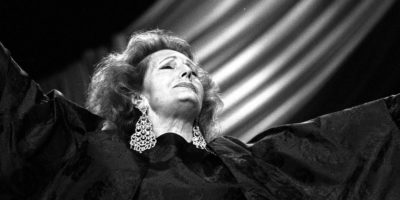10 Things To Know About The Smallpox Vaccine And Its Inventor
Few stories shine brighter in the annals of medical victories than the abolition of smallpox, a terrifying scourge that once afflicted humanity. Smallpox, with its disfiguring scars and lethal toll, formerly loomed over civilizations. However, a ray of hope came from the shadows: the smallpox vaccination.
Humanity used technological creativity to defeat this ancient foe by harnessing the power of immunity. The vaccine, a wonder of medical innovation, is a testimony to human tenacity, a potent elixir that reversed the tide against a stubborn foe. This is the story of how science and resolve came together to defeat a microscopic threat.
Edward Jenner, an English physician, invented the smallpox vaccine in the late 18th century. Jenner did an experiment in 1796 in which he utilized material from cowpox lesions to inoculate a young boy named James Phipps. Let’s learn about the smallpox vaccine and its inventor, Edward Jenner.
1. Smallpox vaccine has gone through several generations of medical technology

Smallpox vaccine.jpg James Gathany, Public domain, via Wikimedia Commons
From 1796 to the 1880s, the vaccine was passed from person to person via arm-to-arm inoculation. Smallpox vaccination was effectively maintained in cattle beginning in the 1840s, and by the 1880s, calf lymph vaccine had become the leading smallpox vaccine.
To eradicate smallpox, first-generation vaccinations manufactured on the skin of living animals were widely distributed in the 1950s and 1970s. For higher purity, second-generation vaccinations were developed in chorioallantoic membrane or cell cultures, and they were employed in select places during the smallpox eradication effort. Third-generation vaccinations, which are based on attenuated strains of vaccinia, saw little use prior to smallpox eradication.
Read On Top 20 interesting facts about Louis Pasteur
2. The origin of the modern smallpox vaccine has long been unclear
The contemporary smallpox vaccine’s predecessor has long been unknown, but horsepox was identified as the most likely ancestor in the 2010s. Because Edward Jenner got his vaccination from a cow, he termed the virus vaccinia, which is Latin for “cow.” Jenner believed that both cowpox and smallpox were viruses that originated in the horse and were passed on to the cow, and some doctors followed his logic by directly inoculating their patients with horsepox.
In the late nineteenth century, Louis Pasteur discovered ways to manufacture vaccinations in the laboratory, further complicating the problem. Inadequate recordkeeping resulted in the formation of laboratory strains with unknown origins as medical researchers subjected viruses to serial transmission.
3. The smallpox vaccination was the first to be created against a communicable disease

Smallpox vaccine (cropped).jpg James Gathany, Public domain, via Wikimedia Commons
Inoculation was already a common technique in Asian and African medicine, but it was fraught with dangers, including the likelihood that persons who had been immunized may become contagious and spread the sickness to others. While Johnnie Notions’ self-created immunization was a huge success, it was only used in the Shetland Islands. Voltaire claimed that during the time, 60% of the population caught smallpox and 20% perished from it.
Voltaire also claims that the Circassians had employed inoculation since time immemorial and that the Turks may have adopted the practice from the Circassians. Daniel Bernoulli examined smallpox morbidity and mortality data in 1766 to illustrate the efficacy of immunization.
Edward Jenner, a British physician, demonstrated in 1796 that infection with the relatively mild cowpox virus conferred immunity against the lethal smallpox virus. Until the modern smallpox vaccine appeared in the twentieth century, cowpox served as a natural vaccine. Smallpox vaccine therefore was the first immunisation for communicable diseases.
4. Jenner is often called “the father of immunology in the West
Smallpox killed 10% of the global population in Jenner’s time, with the figure reaching 20% in towns and cities where infection spread more easily. He was appointed physician to King George IV in 1821, as well as mayor of Berkeley and justice of the peace. He was a Royal Society member.
His work is credited with saving “more lives than any other man,” earning him the title “Father of Immunology.” In fact, he was among the first modern scientists to describe the cuckoo’s brood parasitism in the realm of zoology.
5. Edward Jenner was a qualified doctor and surgeon at age 24

Edward Jenner.jpg John Raphael Smith, Public domain, via Wikimedia Commons
He attended Katherine Lady Berkeley’s School in Wotton-under-Edge and Cirencester as a child. During this time, he was immunized (through variolation) against smallpox, which had a long-term impact on his overall health. He began his apprenticeship at the age of 14 to Daniel Ludlow, a surgeon at Chipping Sodbury, South Gloucestershire, where he received the majority of the experience required to become a surgeon himself.
Signed by 112 members of the Physical Society in London, Jenner’s 1802 testament to the efficiency of vaccination. Jenner, at 21, began his apprenticeship in surgery and anatomy under surgeon John Hunter at St George’s Hospital in London in 1770.
Hunter continued to correspond with Jenner about natural history and nominated him to the Royal Society. Jenner returned to his native area in 1773 and established himself as a successful family doctor and surgeon, practising on dedicated premises in Berkeley.
Read On Top 15 Most Famous Doctors in The World
6. Jenner was among the founders of the Fleece Medical Society
Jenner and colleagues established the Fleece Medical Society, sometimes known as the Gloucestershire Medical Society since it met in the parlour of the Fleece Inn in Rodborough, Gloucestershire. Members shared meals and studied articles on medical topics.
Jenner wrote about angina pectoris, ophthalmia, and cardiac valvular disease, and he also commented on cowpox. He was also a member of a similar group that convened in Alveston, near Bristol.
7. Jenner was elected fellow of the Royal Society in 1788

Edward Jenner by James Northcote.jpg James Northcote, Public domain, via Wikimedia Commons
The Royal Society is a learned society and the National Academy of Sciences of the United Kingdom. Society plays several responsibilities, including promoting science and its advantages, recognizing and supporting excellence in science, offering scientific advice for policy, education, and public involvement, and fostering international and worldwide cooperation.
Jenner was elected a fellow of the Royal Society in 1788 after publishing a detailed study of the previously misunderstood life of the nesting cuckoo, which incorporated observation, experiment, and dissection.
Jenner’s explanation of cuckoo behaviour was not fully accepted until artist Jemima Blackburn, a great observer of wildlife, observed a blind fledgling pushing out a host’s egg. Charles Darwin was persuaded to alter a subsequent edition of On the Origin of Species after reading Blackburn’s description and image.
Jenner’s interest in zoology influenced his first trial with inoculation. Because of his medical background, he not only had a thorough understanding of human anatomy, but he also recognized animal biology and its significance in human-animal trans-species borders in disease transmission.
Read On 25 Famous Biomedical Scientists And Researchers You Need To Know About
8. Jenner obtained his professional certificate from the University of St Andrews

+ 908 wurde St Andrews bereits Bischohfssitz. 13.jpg Holger Uwe Schmitt, CC BY-SA 4.0, via Wikimedia Commons
Even though Jenner was already a qualified doctor and surgeon at 24, he had never attended a formal educational facility that offered medicine as a course. He only learnt medicine as an apprentice through skilled surgeons like Daniel Ludlow, a surgeon of Chipping Sodbury, and John Hunter ( surgery and anatomy) and others at St George’s Hospital, London.
However, in 1773 after Jenny went back to his native countryside with 20 years of experience in general practice and surgery, Jenner obtained the degree of degree of Doctor of Medicine from the University of St Andrews in 1992.
9. Jenny met his wife while was experimenting with balloons
Jenner married Catherine Kingscote in March 1788. He might have met her while experimenting with balloons with some friends. Jenner’s testing balloon landed in Gloucestershire’s Kingscote Park, which is owned by Catherine’s father, Anthony Kingscote. Edward Robert (1789-1810), Robert Fitzharding (1792-1854), and Catherine (1794-1833) were their three children.
10. Jenner held several posts in his later life

Portrait of Edward Jenner. Wellcome M0006237.jpg See page for author, CC BY 4.0, via Wikimedia Commons
Jenner was later elected as a foreign honorary member of the American Academy of Arts and Sciences in 1802, an American Philosophical Society member in 1804, and a foreign member of the Royal Swedish Academy of Sciences in 1806. In 1803 in London, he was elected president of the Jennerian Society, which was dedicated to promoting vaccination in order to eradicate smallpox.
The Jennerian was decommissioned in 1809. Jenner joined the Medical and Chirurgical Society (now the Royal Society of Medicine) when it was founded in 1805 and presented many papers there. The National Vaccine Establishment was formed in 1808 with government assistance, but Jenner felt betrayed by the persons chosen to operate it and quit as director.
Edward Jenner’s legacy shines as a dazzling thread in the tapestry of scientific pioneers, forever influencing the direction of human health. His daring experimentation and foresight gave rise to the smallpox vaccine, a ray of hope that dispelled the spectre of a merciless disease. Jenner’s tenacious spirit and breakthrough work continue to inspire, reminding us that great progress is born of inquiry and courage.
Read On 10 Things to Know about the History of Vaccines
Planning a trip to Paris ? Get ready !
These are Amazon’s best-selling travel products that you may need for coming to Paris.
Bookstore
- The best travel book : Rick Steves – Paris 2023 – Learn more here
- Fodor’s Paris 2024 – Learn more here
Travel Gear
- Venture Pal Lightweight Backpack – Learn more here
- Samsonite Winfield 2 28″ Luggage – Learn more here
- Swig Savvy’s Stainless Steel Insulated Water Bottle – Learn more here
Check Amazon’s best-seller list for the most popular travel accessories. We sometimes read this list just to find out what new travel products people are buying.









